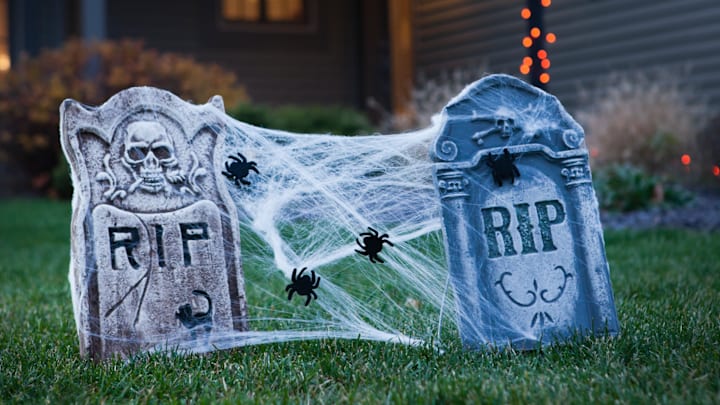Now that the warm, sunny days of summer have wound down and been replaced by cooler temperatures, changing leaves, and pumpkin spice lattes, many will get the urge to bust out their Halloween decorations and string those creepy-looking artificial spider webs around their yards. And though fall is certainly the time for spooky décor, those fake spider webs can turn into a truly scary situation for birds, bees, and other wildlife.
The Hazards of Fake Spider Webs as Halloween Décor
Artificial spider webs are made out of dense cotton, PVC, or other artificial fibers. The stretchy structures don’t break readily and can be difficult for animals to see at night or in low light conditions; this makes it easy for small creatures to fly or walk into them and become stuck. There have been many reports of birds trapped in their fibers, leading to broken limbs and even death.

Some birds have even been spotted using the artificial material to make their nests—and though a nest decked out in Halloween décor sounds cute, it can potentially trap or harm their chicks. Bees, chipmunks, and other small animals can also become stuck and injured in the webbing.
If the risk to animals isn’t enough of a reason to not use artificial webbing, the fake spider webs are also highly flammable. There’s always an uptick in fires around Halloween, often due candles and overheating lights (plus, in certain places, some good old fashioned arson). If the artificial webs catch fire, the blaze could ignite and spread quickly throughout your yard and home.
You Might Also Like ...
- 15 Spooky Halloween Traditions and Their Origins
- Bone Collector: How Home Depot's 12-Foot Skeleton Became the Hottest Thing for Halloween
- 5 Tips for Carving a Pumpkin—And Not Injuring Yourself in the Process
Add Mental Floss as a preferred news source!
Alternatives to Artificial Spider Webs
If you want to ditch the dangerous material but don’t want to say goodbye to an arachnid-themed display, there are some safer, eco-friendly solutions to choose from when adding fake spider webs to your Halloween décor.
You can simply display the fake webs inside your home (making sure you don’t hang them too close to any candles or hot light bulbs, of course). Just drape the webs in window frames, on mirrors, and across doorways.
Alternatively, you could make fake spider webs of all sizes out of rope and knots; these won’t present a danger to the non-human creatures in your neighborhood. Another safe-for-wildlife web decoration option is to make them out of paper. For a really eye-catching fake web, try making your own dramatic DIY light-up web using some simple supplies and string lights, or simply purchase a pre-made one.
A version of this story originally ran in 2023; it has been updated for 2025.
